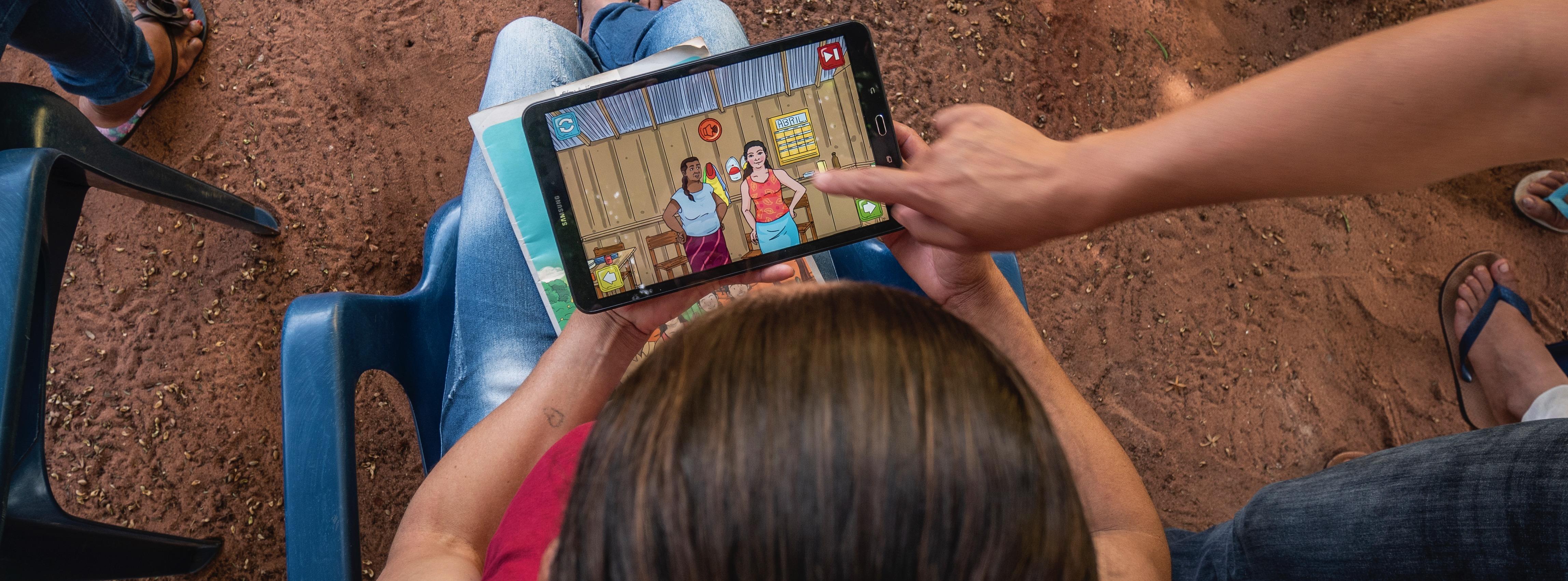
This is a new and dynamic data portal that provides an overview of the key design and implementation aspects of economic inclusion programs globally. The database captures economic inclusion programs defined as a “multidimensional set of bundled interventions that support households and communities to increase their incomes and assets.” Managed by PEI, the economic inclusion data portal consists of:
- Landscape dashboard: provides a snapshot of active economic inclusion programs, including program coverage (the number of people or households reached), objectives, target groups, and institutional arrangements. The data is drawn from The PEI Landscape Survey 2020 conducted in 2019 and 2020 and focused on economic inclusion programs. PEI will continue to capture data from economic inclusion programs to keep the dashboard up to date.
- Costing dashboard: provides a summary of costing data from a subset of economic inclusion programs that completed PEI’s Quick Costing Survey 2020, undertaken between 2019 and 2020. It captures detailed information on each intervention, broken down by direct benefit cost, cost of monitoring, cost of targeting, and others. PEI will continue to capture costing data from interested programs.
- Economic Inclusion database: a list of all of the economic inclusion programs captured with the PEI Landscape Survey 2020.
PEI Data Portal
This is a new and dynamic data portal that provides an overview of the key design and implementation aspects of economic inclusion programs globally. The database captures economic inclusion programs defined as a “multidimensional set of bundled interventions that support households and communities to increase their incomes and assets.” Managed by PEI, the economic inclusion data portal consists of:
- Landscape dashboard: provides a snapshot of active economic inclusion programs, including program coverage (the number of people or households reached), objectives, target groups, and institutional arrangements. The data is drawn from The PEI Landscape Survey 2020 conducted in 2019 and 2020 and focused on economic inclusion programs. PEI will continue to capture data from economic inclusion programs to keep the dashboard up to date.
- Costing dashboard: provides a summary of costing data from a subset of economic inclusion programs that completed PEI’s Quick Costing Survey 2020, undertaken between 2019 and 2020. It captures detailed information on each intervention, broken down by direct benefit cost, cost of monitoring, cost of targeting, and others. PEI will continue to capture costing data from interested programs.
- Economic Inclusion database: a list of all of the economic inclusion programs captured with the PEI Landscape Survey 2020.
| Program Name | Country | Region | Type lead implementing agency | Lead implementing agency | Primary entry point | PDF Link |
|---|---|---|---|---|---|---|
| Kelompok Usaha Bersama (KUBe) | Indonesia | East Asia & Pacific | National/central government | Ministry of Social Affairs | Social Safety Nets |  |
| Strengthening Rights and Economies of Adat and Local Communities Project | Indonesia | East Asia & Pacific | Nongovernmental organization | Samdhana Institute | Livelihoods and Jobs |  |
| Women for Women International's Empowerment Program | Iraq | Middle East & North Africa | Nongovernmental organization | Women for Women International | Livelihoods and Jobs |  |
| Rural Economic Growth and Employment Project (REGEP) | Jordan | Middle East & North Africa | National/central government | Jordan Enterprise Development Corporation | Financial Inclusion |  |
| Small-Ruminant Investments and Graduating Households in Transition (SIGHT) | Jordan | Middle East & North Africa | National/central government | Ministry of Agriculture | Social Safety Nets |  |
| Kenya Marine Fisheries and Socio-Economic Development (KEMFSED) Project | Kenya | Sub-Saharan Africa | National/central government | Ministry of Agriculture, Livestock, Fisheries, and Cooperatives (MoALFC) with State Department for Fisheries, Aquaculture, and the Blue Economy (SDF&BE) | Livelihoods and Jobs |  |
| Can asset transfer or asset protection policies alter poverty dynamics in northern Kenya? A randomized controlled trial (RCT) | Kenya | Sub-Saharan Africa | Nongovernmental organization | BOMA Project | Livelihoods and Jobs |  |
| Feed the Future (FTF) Kenya Livestock Market Systems Activity (KLMS)—Rural Entrepreneurship Access Project (REAP) | Kenya | Sub-Saharan Africa | Nongovernmental organization | BOMA Project | Livelihoods and Jobs |  |
| Rural Entrepreneur Access Project (REAP). Ongoing cohorts in northern Kenya | Kenya | Sub-Saharan Africa | Nongovernmental organization | BOMA Project | Livelihoods and Jobs |  |
| USAID–funded feed the future Kenyan livestock market systems (LMS); Expanding Economic Opportunities (EOO): Rural Entrepreneur Access Project | Kenya | Sub-Saharan Africa | Nongovernmental organization | Mercy Corps | Livelihoods and Jobs |  |

